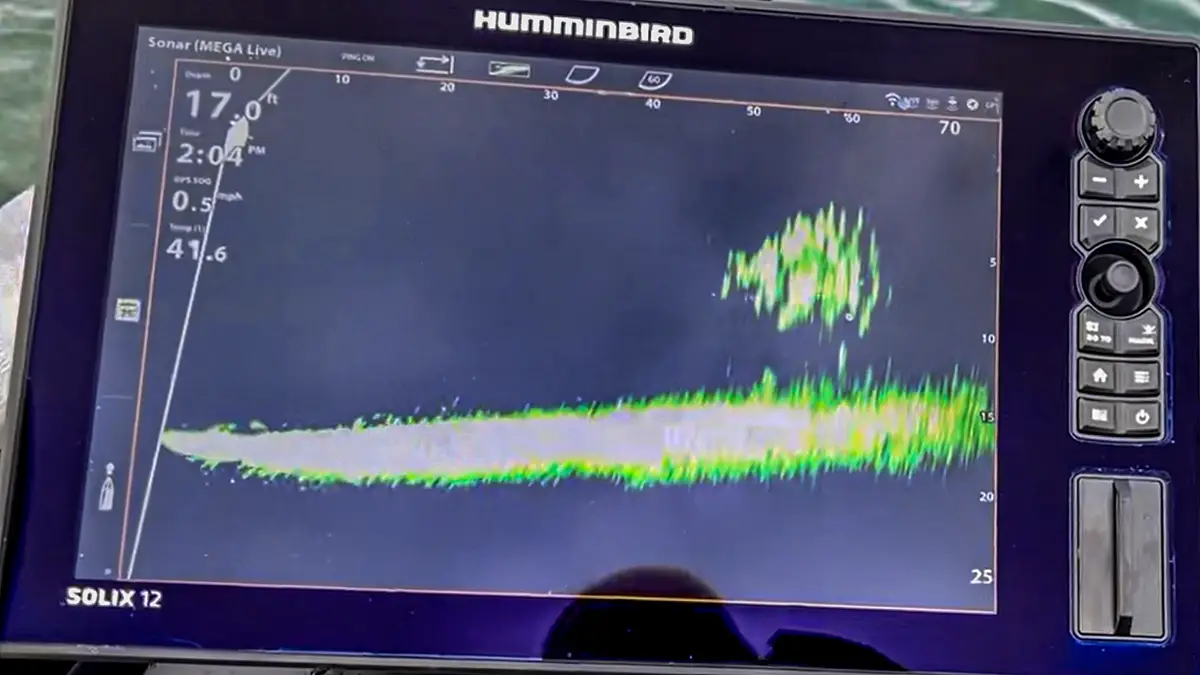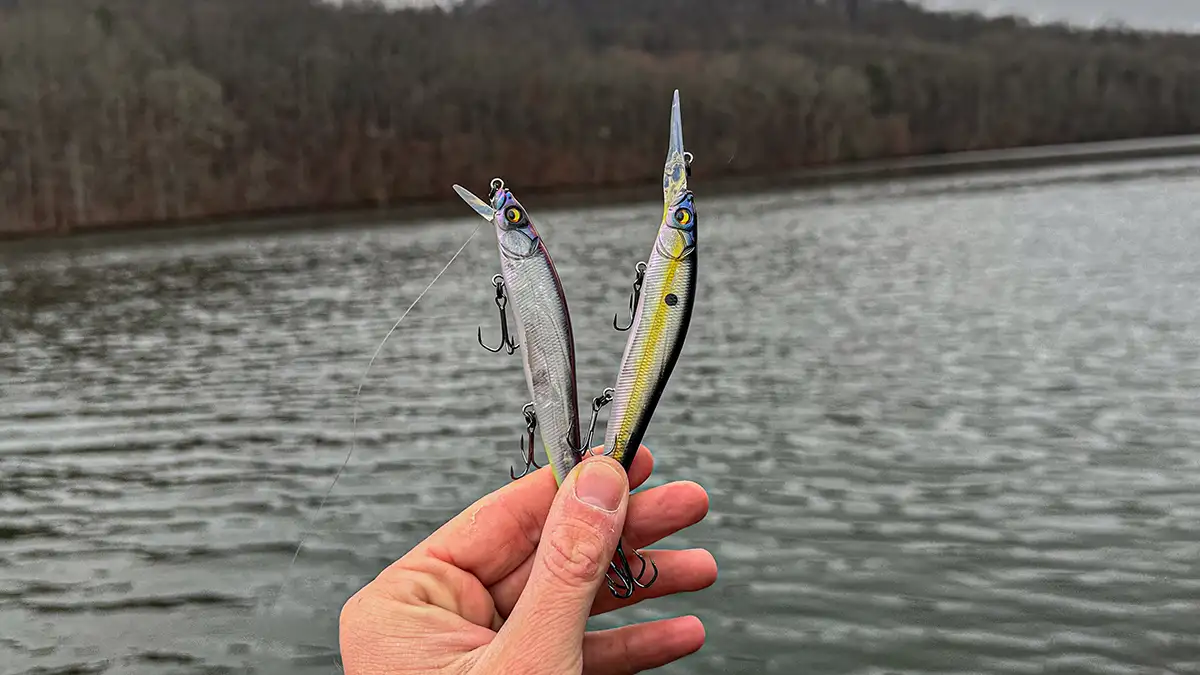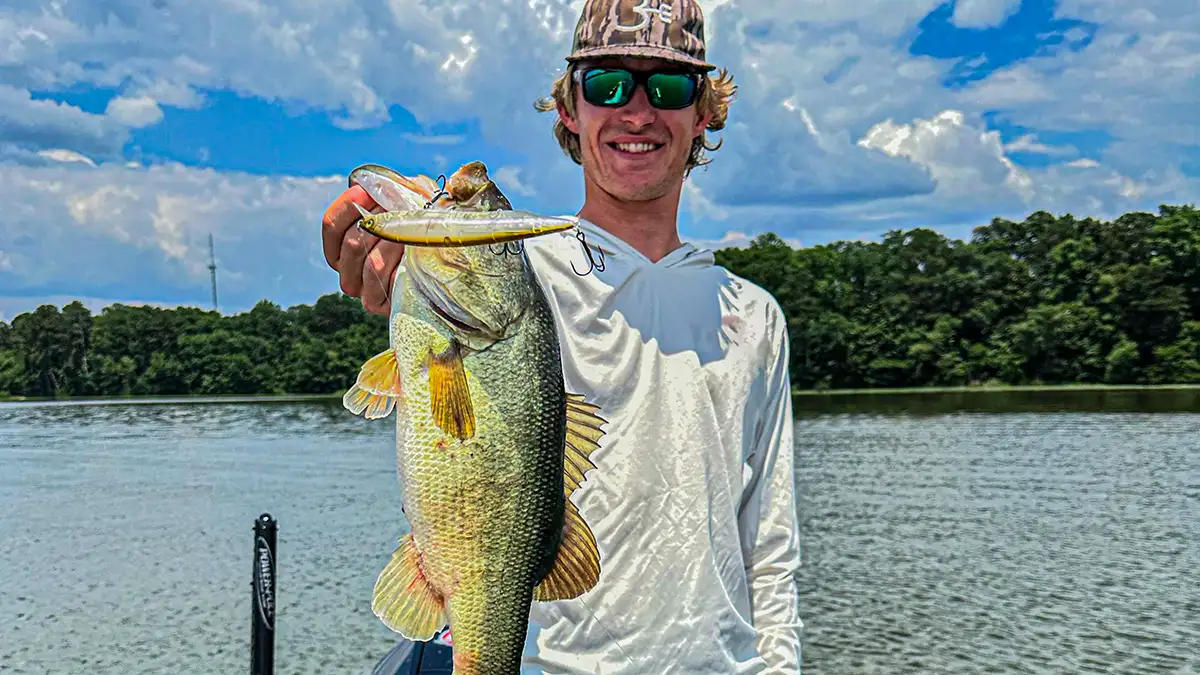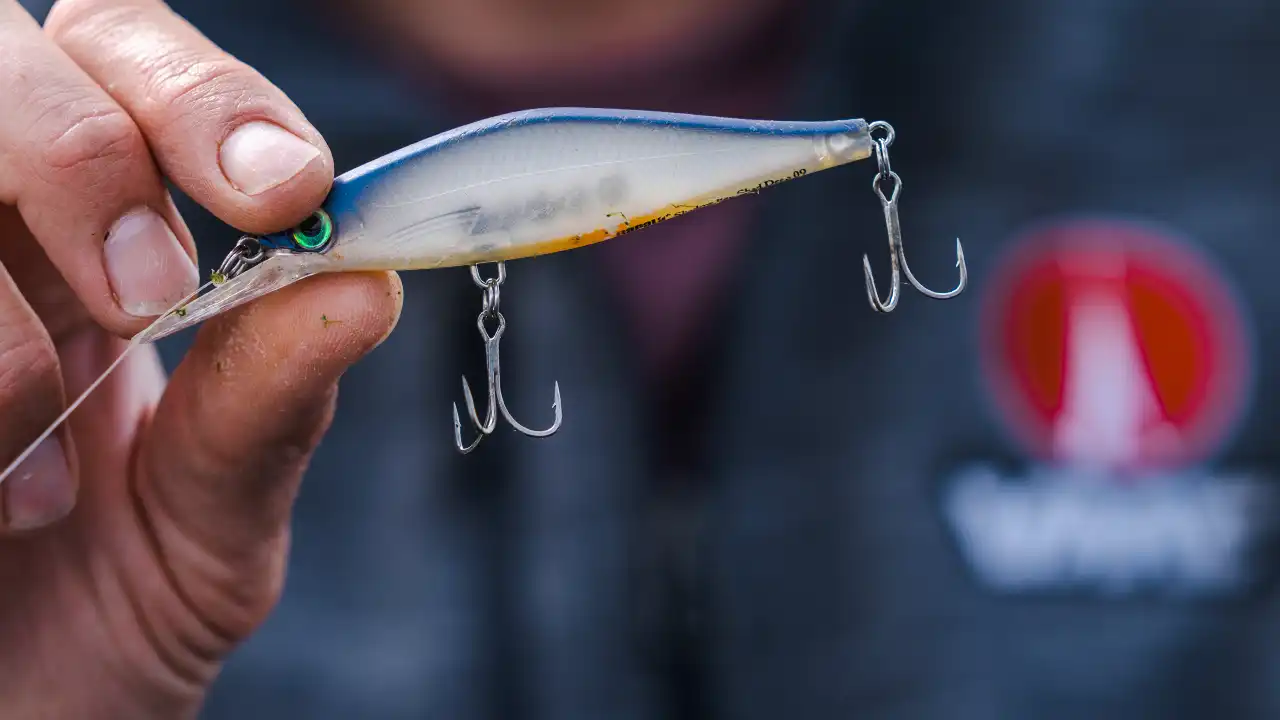With winter quickly approaching, most of the typical fall largemouth patterns are in full swing. Bass are largely focused on baitfish this time of year, causing a variety of shad imitation baits to be very productive. One of the most effective baits for catching big largemouth feeding on shad is a jerkbait. This baits drawing power makes it a great tool for catching bass that are roaming in search of bait.
This lure can be fished in a wide range of scenarios, and is great for targeting bass that are suspended in the water column. When you combine the right conditions and todays electronics, you can have some pretty magical days of jerkbait fishing. This feature covers when, where and how to fish a jerkbait for fall largemouth.

WATER TEMPERATURE
Water temperature is one of the biggest factors in having a successful day of jerkbait fishing. While the water can never be too cold, throwing this bait during warmer conditions can often find the bite more difficult. Once the water temperatures reach the mid 60s, a jerkbait typically shines in my local area here in Auburn, Alabama. Some of my favorite jerkbaits for when the water reaches the mid 60s is the Rapala PXR Mavrik 110 and the Berkley Stunna 112.
The colder these water temperatures drop, the slower the bass move around the water column. These colder temperatures can make them much easier to target on live sonar due to their slower nature and them being more prone to suspend. These fish can get on a wide variety of structure depending on their forage and current conditions. Throwing a jerkbait at these fish is one of the most effective ways to fish given the right scenario and conditions.

USING YOUR ELECTRONICS
Using your electronics is the most effective way to fish this bait throughout the fall and winter. Bass will position themselves on a variety of differing structure. Electronics such as side and down scan allow us to quickly locate these productive areas. Looking for bait balls, brush piles and other types of cover are all great ways to quickly locate a group of bass. Once you find an area you want to fish, drop a waypoint and circle back around on your trolling motor.
This is when forward facing sonar becomes extremely effective. You can then use this technology to target individual fish with varying presentations based off how they’re positioned in the water column. Keeping the bait above the fishes head is a crucial factor in getting them to commit, and this technology allows us to do to be the most efficient and precise with this. While this is a major factor in catching fish, seeing where fish are positioned in the water column is the best indicator for having a successful day of jerkbait fishing.

HOW FISH POSITION
How a bass positions itself in the water column is a great hint at what type of bait this fish might want to eat. Typically, if a bass is high in the water column, they want to chase a moving bait such as a topwater or a jerkbait. This is because the majority of forage in this scenario would imitate a fast moving baitfish. If fish are positioned lower in the water column, however, they typically prefect a bottom bait or moving bait that close to the bottom.
The best way to target fish that want to feed on a jerkbait is by looking for packs of fish that are positioned high in the water column. These bass will often be moving quickly in a group, typically in search of bait. Using your live sonar to cast a jerkbait in front of these fish is a productive way to get a bite. While you often see groups of multiple fish, you typically only catch one or two out of a school. If fish are positioned on the bottom however, I will often opt for a drop shot or other style of bottom bait. One of the best places to find bass suspended is around brush piles.

FISHING BRUSH
Brush piles are one of the simplest and most effective places to fish a jerkbait. This is typically a very repeatable pattern and can be a great way to catch both quality and quantity. The best way to quickly find these locations is by idling using both side and down imaging. I will typically set my side imaging out to 120 feet in order to see cover at a greater distance. I’ll then idle flats and contour changes in search of brush and fish.
Once you find a brush pile, drop a waypoint and circle back using your trolling motor. Typically, the fish that are positioned above the brush pile are most likely to eat a jerkbait. It is important to make a long cast over the fish and not land the bait on their head. This will keep from spooking the fish, leading to a higher likelihood of a strike. Quickly twitching this bait over a school of largemouth is a great way to get them to come up and commit to your bait.

FISHING DITCHES
Fishing ditches with a jerkbait is another very productive pattern once temperatures really start to cool. I’ve found these ditches are most productive when the water temperature is 60-degrees or less. This colder water tends to congregate baitfish in these areas, causing bass to group up and feed. This works best on clear water fisheries and can be a great way to catch a ton of bass. I tend to opt for a a silent jerkbait in freezing cold water temperatures. One of my go-to baits is the Silent Megabass Vision 110.
Locating groups of bass chasing bait in these areas is a great way to target these fish. Throwing a jerkbait in front of these fish is the best way to get them to react. Using Suspend Strips or lead wire wrapped around the hooks are both great ways to sink your bait down to target deeper bass in this scenario. While bait tends to congregate in ditches, there are plenty of other locations where bass target these balls of bait.

FISHING BAIT
Targeting balls of bait has become an extremely popular pattern over the last several years. This strategy has won numerous high dollar tournaments and is an extremely effective way to catch fish this time of year. This style of fishing consists of locating a ball of bait, and then targeting the bass feeding on it using live sonar. These fish are typically fat due to the abundance of bait, often leading to some quality fish.
Targeting these fish using a jerkbait is a great way to get them to react in this scenario. This can happen in a variety of locations, however, it’s typically related to either a river or creek channel. The best way to find these locations is by idling for schools of bait on side and down imaging, then fishing these locations using forward facing sonar. Casting the bait in front of these fish is extremely important, as they often won’t react unless you get their attention when they are chasing.

THE PROPER JERKBAIT SETUP
Throwing a jerkbait on light tackle is a fun was to catch bass, however it can get dicey if you hook into a big one. Having the right setup can make all the difference when it comes to landing big fish on light tackle. For my jerkbait setup, I prefer a 7-foot, moderate-action rod with a high gear ratio reel. This softer rod keeps you from bending out your treble hooks, while the shorter length allows for accurate casts. One of my go to jerkbait rods is the Dobyn’s Champion Extreme DC 705 CB.
For a reel, I prefer one with a smaller spool and a high gear ratio. I prefer a smaller spool to create a lighter reel. I also typically use anything from 10 to 12-pound line, so I don’t need a giant spool to make long casts. The faster gear ratio allows you to quickly pick up line between jerks, which is essential for delivering an adequate hookset. One of my favorite reels for jerkbait fishing is the Shimano Curado 70 MGL K in the 8:1 gear ratio.
If your looking for a great way to target suspended largemouth this fall and winter, throwing a jerkbait using forward facing sonar is a great way to do it. If you have the right water temperature, fish positioning and conditions, throwing a jerkbait can lead to some magical days on the water. This review shows you how, when and where to capitalize on a jerkbait bite this fall season.

















